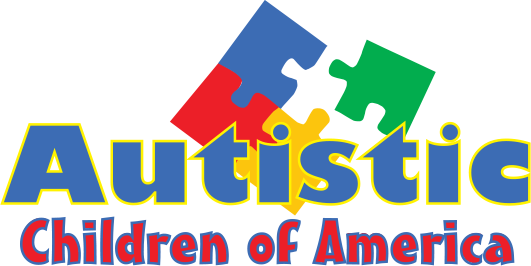Research shows that intensive behavioral therapy can significantly improve cognitive and language skills. Early intensive behavioral intervention should involve a child’s whole family while working with a team of professionals. Some programs include therapists coming to the home and providing services, including having the parent leading a therapy session. Other programs include having therapy sessions in a specialized center, classroom or preschool.
As a child develops and acquires social and learning skills, different interventions and supports become applicable. For instance, when children enter school, targeted social skills programs and specialized approaches to teaching may be beneficial to the autistic child. (Learn more about our Social Skills Camp Scholarship Program and iPad Program).
Early Intervention Therapies
A widely accepted treatment for ASD is Applied Behavior Analysis (ABA). The goals in this treatment are to reduce unfavorable behaviors and shape and reinforce new behaviors, such as learning to speak and play. ABA can involve intensive, one-on-one child-teacher interaction for up to 40 hours a week. This intensive treatment has inspired the development of other interventions that aim to help those with ASD reach their full potential. ABA-based interventions include:
- Verbal Behavior: focusing on teaching language by guiding children from simple verbal behaviors to more functional communication skills.
- Pivotal Response Training: identifies pivotal skills that affect a broad range of improvements in communication, social, and behavioral domains.
Other types of early interventions include:
- Developmental, Individual, Relationship-based (DIR)/Floortime Model: aims at building healthy foundations for social, emotional, and intellectual capabilities rather than on skills and isolated behaviors.
- TEACCH (Treatment and Education of Autistic and related Communication handicapped Children): emphasizes visual learning in a classroom with schedules and defined areas clearly marked with pictures and words to help autistic children identify activities independently.
- Interpersonal Synchrony: targets social development and imitation skills, and focuses on teaching children how to make frequent and intentional efforts to engage others in communication or play.
While no single treatment works for all individuals with ASD, there are common features of effective early intervention programs. The American Academy of Pediatrics provided a list of these common features:
- Starting as soon as a child has been diagnosed with ASD
- Providing focused and challenging learning activities at the proper developmental level for the child for at least 25 hours per week and 122 months per year
- Having small classes to allow each child to have one-on-one time with the therapist or teacher and small group learning activities
- Having special training for parents and family
- Encouraging activities that include typically developing children, as long as such activities help meet a specific need
- Measuring and recording each child’s progress and adjusting the intervention program as needed
- Providing a high degree of structure, routine, and visual cues, such as posted activity schedules and clearly defined boundaries, to reduce distractions
- Guiding the child in adapting learned skills to new situations and settings and maintaining learned skills
- Using a curriculum that focuses on
- Language and communication
- Social skills, such as joint attention (looking at other people to draw attention to something interesting and share in experiencing it)
- Self-help and daily living skills, such as dressing and grooming
- Research-based methods to reduce challenging behaviors, such as aggression and tantrums
- Cognitive skills, such as pretend play or seeing someone else’s point of view
- Typical school-readiness skills, such as letter recognition and counting
Citations:
Information in this section is based on source material drawn from:
National Institute of Mental Health. A Parents Guide to Autism Spectrum Disorder. N.p., n.d. Web. 25 June 2012. <https://www.nimh.nih.gov/health/publications/autism-spectrum-disorder/index.shtml>.
